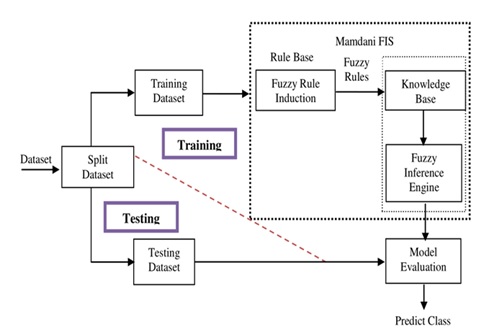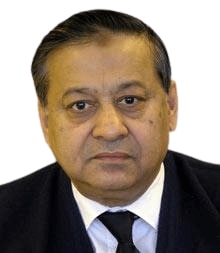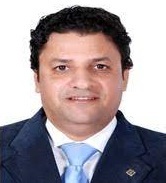Assessment of Water Quality using Machine Learning and Fuzzy Techniques

DOI:
https://doi.org/10.54060/jieee.v4i1.91Keywords:
river water quality, Machine Learning, fuzzy system, ganga riverAbstract
The water quality of river Ganga is an important concern due to its drinking, domestic uses, irrigation and also for aquatic life. But the extent of pollutants in river water has deteriorated the quality of river water. So, the assessment of river water becomes very important. But due to the involved subjectivity and uncertainty in the decision making parameter makes the task very complex. In this study, machine learning and fuzzy techniques are utilized to develop the river water quality assessment models. The quality of the water is grouped into three classes. Four machine learning algorithms namely decision tree, random forest tree, k-nearest neighbor and support vector machine are used and implemented on python and anaconda platform. Whereas, three fuzzy based models (fuzzy decision tree, wang-mendel and fast prototyping) are developed using Guaje open source software. All the seven models are analyzed in terms of accuracy, precision, recall and f1-score. The observed result shows that the fuzzy decision tree-based assessment model performs more accurately as compared with the machine learning based models.
Downloads
References
U. Ahmed, R. Mumtaz, H. Anwar, A. A. Shah, R. Irfan, and J. García-Nieto, “Efficient Water Quality Prediction Using Supervised Machine Learning,” Water, vol. 11, no. 11, p. 2210, Nov. 2019.
S. Desbureaux, R. Damania, A. Rodella, J. Russ, and E. Zaveri, “The Impact of Water Quality on GDP Growth,” World Bank, Washington, DC, Jan. 2019.
A. H. Haghiabi, A. Nasrolahi, and A. Parsaie, “Water quality prediction using machine learning methods,” Water Quality Re-search Journal, vol. 53, no. 1, pp. 3–13, Jan. 2018.
S. Babaei et al., “Water quality index development using fuzzy logic: A case study of the Karoon River of Iran,” African Journal of Biotechnology, vol. 10, no. 50, pp. 10125–10133, Sep. 2011.
N. H. Omer, “Water Quality Parameters,” Water Quality - Science, Assessments and Policy, Oct. 2019.
D. T. Bui, K. Khosravi, J. Tiefenbacher, H. Nguyen, and N. Kazakis, “Improving prediction of water quality indices using novel hybrid machine-learning algorithms,” Science of The Total Environment, vol. 721, p. 137612, Mar. 2020.
M. Ahmad, “Machine Learning Approach for Predicting the Quality of Water,” 2020.
P. K. Shukla, “Development of Fuzzy Knowledge-Based System for Water Quality Assessment in River Ganga,” Advances in In-telligent Systems and Computing, pp. 17–26, 2020.
F. Muharemi, D. Logofătu, and F. Leon, “Machine learning approaches for anomaly detection of water quality on a real-world data set,” Journal of Information and Telecommunication, vol. 3, no. 3, pp. 294–307, Feb. 2019.
S. Nafi, A. Mustapha, S. A. Mostafa, S. H. Khaleefah, and M. N. Razali, “Experimenting Two Machine Learning Methods in Classi-fying River Water Quality,” Communications in Computer and Information Science, pp. 213–222, 2020.
A. K. Bisht, R. Singh, R. Bhutiani, and A. Bhatt, “Application of Predictive Intelligence in Water Quality Forecasting of the River Ganga Using Support Vector Machines,” Predictive Intelligence Using Big Data and the Internet of Things, 2019.
R. Prakash, V. P. Tharun, and S. Renuga Devi, “A Comparative Study of Various Classification Techniques to Determine Water Quality,” IEEE Xplore, 01-Apr-2018.
S. R. Safavian and D. Landgrebe, “A survey of decision tree classifier methodology”, IEEE Transactions on Systems, Man, and Cybernetics, vol. 21, no. 3, pp. 660–674, 1991.
M. Pal, “Random forest classifier for remote sensing classification”, International Journal of Remote Sensing, vol. 26, no. 1, pp. 217–222, Jan. 2005.
K. Chandel, V. Kunwar, S. Sabitha, T. Choudhury, and S. Mukherjee, “A comparative study on thyroid disease detection using K-nearest neighbor and Naive Bayes classification techniques”, CSI Transactions on ICT, vol. 4, no. 2, pp. 313–319, Dec. 2016.
R. Besrour, Z. Lachiri, and N. Ellouze, “ECG beat classifier using support vector machine”, 2008 3rd International Conference on Information and Communication Technologies: From Theory to Applications, Damascus, pp. 1–5, 2008.
H. Ichihashi, T. Shirai, K. Nagasaka, and T. Miyoshi, “Neuro-fuzzy ID3: a method of inducing fuzzy decision trees with linear pro-gramming for maximizing entropy and an algebraic method for incremental learning”, Fuzzy Sets and Systems, vol. 81, no. 1, pp. 157–167, Jul. 1996.
L. Wang and J. Mendel, “Generating fuzzy rules by learning from examples”, IEEE Transactions on Systems, Man, and Cybernet-ics, vol. 22, no. 6, pp. 1414–1427, Nov. 1992.
P. K. Shukla and S. P. Tripathi, “A new approach for tuning interval type-2 fuzzy knowledge bases using genetic algorithms”,” Journal of Uncertainty Analysis and Applications, vol. 2, no. 1, pp. 1–15, 2014.
P. K. Shukla and S. P. Tripathi, “A Review on the Interpretability-Accuracy Trade-Off in Evolutionary Multi-Objective Fuzzy Sys-tems (EMOFS)”,” Information, vol. 3, pp. 256–277, 2012.

Downloads
Published
How to Cite
CITATION COUNT
License
Copyright (c) 2023 Shashi Kant, Devendra Agarwal, Praveen Kumar Shukla

This work is licensed under a Creative Commons Attribution 4.0 International License.

























